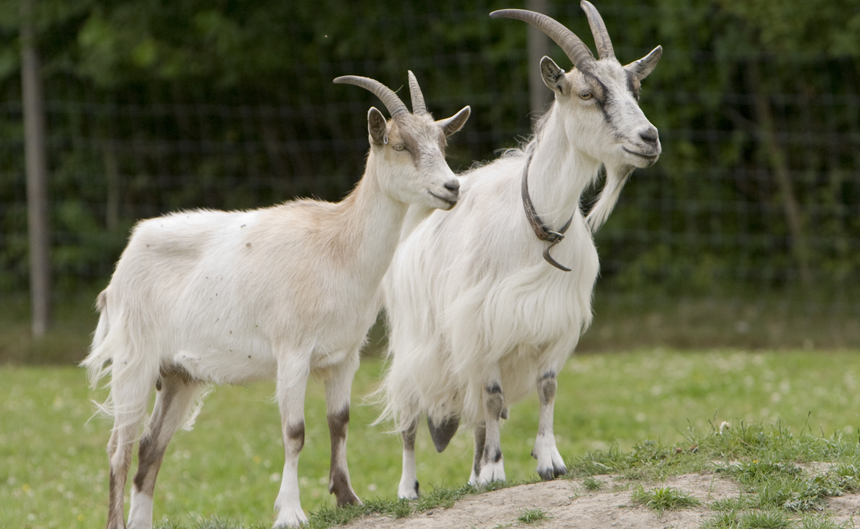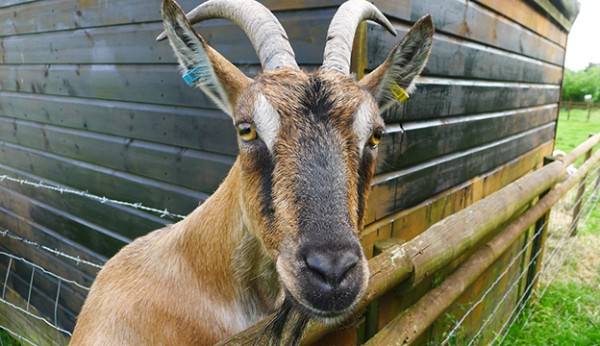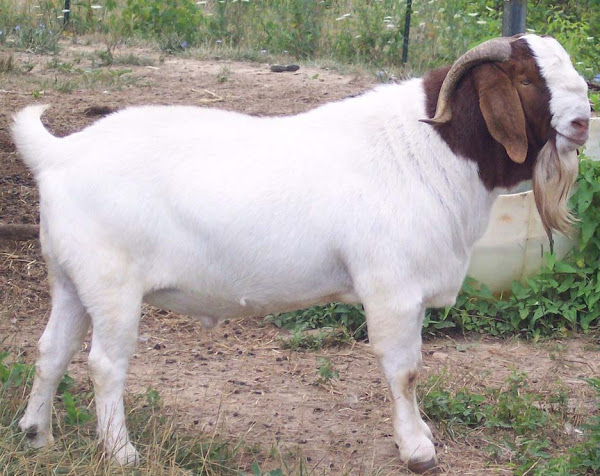Goats have been around for thousands of years, yet not many know anything about this animal. Below, we listed 40 of the most bizarre and interesting facts about goats. Use these facts to learn more about this fascinating farm animal.
1. Most goats can be found in either Asia or the Middle East.
2. Goats were the very first animal to be used for milk by humans.
3. Goats were one of the first animals to be domesticated by humans in 10,000 B.C.
4. The term “Judas Goat” is used to describe a goat that is trained to herd other animals to slaughter while it’s own life is spared.
5. Goats were first brought to the Americas by Columbus in 1493.
6. There are around 450 million goats around the world.
7. There are over 210 different kinds of breeds of goat in the world.
8. Goats were regularly imported into America in the early 1900s.
9. The male goat is called a “buck” or a “billy.”
10. The female goat is called a “doe” or “nanny.”

11. A baby goat is called a “kid.”
12. A castrated male goat is called a “wether.”
13. When a female goat is giving birth, it’s called “kidding.”
14. Goats don’t have teeth in their upper front jaw, much like cows.
15. One female goat can have 1 to 6 kids per litter. However, having 4 to 6 kids is very rare.
16. Both male and female goats can have beards.
17. Goats have 24 molars and 8 incisors.
18. Goats prefer browse over grass and grass over clover.
19. Normally, goats have two teats and cows have four.
20. Male goats go through a period called a “rut” when they’re ready to make. This period lines up with the start of the breeding season.

21. Goats don’t eat tin cans, clothing or garbage, they’re very selective on what they eat.
22. The male “rut” is characterized by a decrease in appetite, obsessive interest in does, fighting between bucks and a strong foul smell.
23. Goats and sheep are seasonal breeders.
24. Goats can be born with or without horns.
25. Lactating does that are kept in a pen with a foul smelling buck can produce milk that tastes “goaty” and can taste very bad to humans.
26. “Chevon” is the French word for goat. These are animals that are slaughtered near or shortly after weaning.
27. Yearlings does should be bred when they have reached 80 pounds of body weight or when they have reached 60% to 70% of the adult weight for their breed. They also have to be in good health.
28. Goats are hollow-horned, bearded, ruminant mammals of the genus Capra and the species Hircus.
29. In the United States, goats are primarily raised for wool, milk and meat.
30. Goats are widely used to make gelatin while their manure is used for fertilizer. They’re also used for research models in biological studies.
31. Goats are bovines and are closely related to cows and antelopes.
32. Around the world, more people eat and drink goat milk than any other animal.
33. The natural life expectancy of a goat is around 8 to 12 years, and in some very rare cases, over 15 years.

34. The breeding age for male goats is around 8 to 10 months.
35. The age of puberty for female goats is between 7 to 10 months and 4 to 8 months for male goats.
36. A healthy male buck can breed 20 to 40 does.
37. The length of pregnancy in does is between 146 and 155 days.
38. Goats don’t like to get wet and prefer to find shelter when it’s raining.
39. Goats are very agile creatures and, in some cases, can jump to over 5 feet.
40. Depending on the breed, adult female goats can weigh between 22 and 300 pounds and adult males can weigh between 27 and 350 pounds of body weight.




One Comment
Pingback:
February 26, 2018 at 1:11 pm